Last Updated on 27/08/2023

In this guide to the best 0-degree sleeping bags for cold weather, we share everything we know about winter sleeping bags. You will learn about down vs synthetic sleeping bags as well as choosing a sleeping bag that actually works to the stated temperature rating.
To clarify, when we are talking about a 0-degree sleeping bag, we are using Celcius instead of Fahrenheit. This is because when most people think of 0-degree camping weather, they think of just below-freezing temperatures. Converted, 0ºC is roughly around 30ºF.
How do we know which sleeping bag works best in freezing temperatures? Because we test a bunch of different ones every year and so we know about the newcomers and how they compare to the classics (like the Rab Neutrino).
Choosing the Right 0-Degree Sleeping Bag
0-Degree Sleeping Bags are designed to be warm, lightweight, and compact so that you don’t have too much to carry.
When you’re backpacking, there’s little worse than spending a night shivering in your sleeping bag – desperately waiting for the sun to rise while wearing countless layers of clothing and your wooly hat for extra warmth. Even worse, if you’re facing a day of adventuring in the cold outdoors! So to ensure you stay toasty while you’re camping in winter, you must have the right sleeping bag to keep you warm.
- Related: Top Rated Down Sleeping Bags
- Related: Ultimate Backpacking Gear Checklist
I should also mention early on that as well as a sleeping bag, an insulated sleeping pad is essential to stay warm when sleeping on the ground. You should normally use your sleeping pad underneath your sleeping bag and not inside – trust us. We tested whether it was possible here.
Not sure which sleeping bag to get for traveling? Check out our top list of Zero Degree Sleeping Bags for cold climates using the quick links below.
Best Cold Weather Sleeping Bags for 0 Degrees
Western Mountaineering Ultralite Mummy Sleeping Bag
- WEIGHT: 1 lb 13 oz / 820 g
- TEMPERATURE: 20° F / -7° c
- PACK SIZE: 17″ x 13″ / 18 cm x 33 cm
- MATERIALS: 850+ FP down insulation, Microlite XP shell, Full down collar
The Western Mountaineering Ultralite is a lightweight 0-degree sleeping bag that will keep you comfortably warm down to -7° c. It compresses down very small and has an excellent warmth-to-weight ratio. The outer material might not feel very tough, but once you get over the initial fear of damaging it, you realize it is much tougher than you thought.
If this isn’t warm enough for you, check out the Western Mountaineering Puma GWS -25F for a serious sub-zero sleeping bag system.
VERDICT: The Western Mountaineering Ultralite has been our favorite cold-weather sleeping bag for many years now, and the only other alternative that comes close is its brother, the Versalite. Still, nothing has come along that we think is better suited for sleeping in minus-degree temperatures. Ideal for backpacking and will last for a long time (10 – 20+ years).
Marmot Helium 15 F Sleeping Bag

- WEIGHT: 2 lbs 1 oz / 935g
- TEMPERATURE: 15° F / -9° c
- PACK SIZE: 7″ x 14″ / 17.8 cm x 35.5 cm
- MATERIALS: 800 FP goose down, Ultralight Pertex Microlight 20d nylon ripstop shell with DWR, 30d 100% Nylon lining with DWR
The Marmot Helium is a great 3-4 season 0-degree sleeping bag that is lightweight and resistant to moisture. There is a handy second zip at the top of the left-hand side which provides easy access and extra ventilation when opened. The multi-baffle hood is super snug and can be drawn in tightly to seal in heat and has a nice inner pocket to store valuables.
For a slightly lighter bag rated for 20ºF check out the Marmot Ion or if you don’t mind a bit more weight for a warmer sleeping bag then check out the Marmot Lithium.
VERDICT: The Helium 15 F is still one of Marmot’s flagship down sleeping bags for below-freezing. It is stuffed full of high loft goose down, which is protected by a water-resistant Pertex shell to make it nice and durable for damp conditions. The Helium is very comfortable and has added stretch to the material allowing you to move about without having lots of dead space.
Mountain Hardwear Bishop Pass 15F Sleeping Bag
- WEIGHT: 2 lbs 5.4 oz / 1,060 g
- TEMPERATURE: 15° F / -9° c
- PACK SIZE: 8 x 15.5 in / 20 x 39.5 cm
- MATERIALS: 650-fill Down RDS Cert/Fluorine Free, 20D Ripstop Nylon with DWR finish
The Mountain Hardwear Bishop Pass 15F Sleeping Bag is a three-season sleeping bag for backpackers and campers looking for lightweight warmth and extra protection from moisture. The ThermoTrap baffle construction locks the down into smaller chambers which reduce heat migration and keeps you warmer. The DWR treatment helps repel water, and the 650 FP down retains maximum loft in damp conditions to help keep you warm and dry all night.
The Mountain Hardwear Phantom Flame sleeping bag offers similar temperature ratings and is 7 oz lighter but costs about double the price. The Mountain Hardwear Ghost -40F is one of the warmest sleeping bags on the market and worth checking out if you are thinking of going to Antarctica or somewhere like that.
VERDICT: The Mountain Hardwear Bishop Pass 15F Sleeping Bag seems to have replaced the Mountain Hardwear Ratio 15 as their number one 0-degree sleeping bag. We like the slimmer design, which traps more heat and has a bunch of upgrades we are glad to see (including a glow-in-the-dark zipper pull). We highly recommend this and most Mountain Hardwear sleeping bags which have earned a strong reputation over many years.
Nemo Sonic Down 15 Sleeping Bag
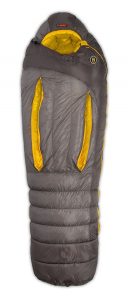
- WEIGHT: 2 lbs 6 oz / 1,090 g
- TEMPERATURE: 15° F / – 9° c
- PACK SIZE: 18″ x 9″ / 46 cm x 23 cm (6.5 liters)
- MATERIALS: 850 FP Duck down, 20D Nylon Ripstop with DWR treatment, 40D Nylon Ripstop with OSMO™ foot box, 20D Nylon Mini Ripstop with DWR treatment
The Nemo Sonic Down 15 offers the best internal temperature regulation of all the cold weather sleeping bags for backpacking on this list. The Thermo Gills can regulate the internal temperature of the sleeping bag by up to 20° F, which makes this a versatile choice for year-round use. A combination of vertical and horizontal baffles prevents down migration in key areas, and the stretchy fabric around the knees stops you from feeling restricted.
The Sonic Down sleeping bag is also available in a 0° F rated model. Worth noting is that the founder of NEMO is a former NASA contractor tasked with designing space suits.
VERDICT: The Sonic Down from NEMO is one of the smartest sleeping bags I have ever slept in. Because of the Thermo Gills, you can easily regulate your temperature on warmer nights, and on cold nights they completely seal up and don’t lose any heat. One for the people who sleep hot.
Western Mountaineering Antelope MF Sleeping Bag

- WEIGHT: 2 lbs 7 oz / 1,105 g
- TEMPERATURE: 5 F / -15 c
- PACK SIZE: 8″ x 17″ / 20 cm x 43 cm
- MATERIALS: 850 FP down insulation, weather-resistant MicroLite XP™ fabric shell, 15D Nylon Taffeta lining
The Western Mountaineering Antelope MF is a reliable cold-weather backpacking sleeping bag for year-round use all around the world. The 7″ loft captures warm air very fast, and the MicroLite XP shell is highly breathable to prevent you from overheating. The spacious girth and plump full-down collar make this a serious piece of backpacking gear that is also very comfortable.
This bag is also available with a Gore Windstopper™ shell in the GWS version or check out the Apache GWS mummy-style sleeping bag which is slightly more compact and fractionally lighter.
VERDICT: The Antelope MF sleeping bag from Western Mountaineering is too warm for most climates. If it isn’t below zero degrees, then this bag will feel like a sauna. If, however, the temperatures drop below freezing, this is the perfect bag to keep you warm. No other sleeping bag will loft up as high as the Antelope MF, which has 7 inches of loft on the top side. If you sleep cold, then this one is for you.
Rab Neutrino Endurance 600 Sleeping Bag
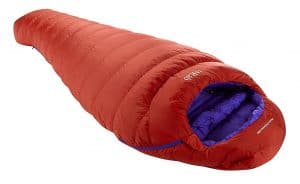
- WEIGHT: 2 lbs 7 oz / 1,100 g
- TEMPERATURE: 25 F / -3° c comfort | 15 F / -9.5° c limit | -18 F / -28° c extreme
- PACK SIZE: 8.6″ x 12.2″ / 22 cm x 31 cm
- MATERIALS: 800 FP European Goose Down (Rab® fluorocarbon free Hydrophobic Down developed in conjunction with Nikwax®), Pertex® Endurance shell, Pertex Quantum® liner with Polygiene® STAY FRESH odor control treatment
The Rab Neutrino Endurance 600 is not new by any means, but it is still one of the best cold-weather backpacking sleeping bags on the market. It uses Pertex to protect you from getting wet, as well as utilizing Nikwax technology to maintain loft and performance in wet conditions.
Rab is well known for its ethically sourced materials and uses some of the highest quality down available in the world. Lots of wiggle room and maximum comfort make the Rab Neutrino Endurance 600 a serious contender.
For a super warm sleeping bag for the coldest backpacking expeditions, check out the Rab Expedition Series, which are stuffed with up to 1,400 g of the highest quality 850 FP European goose down.
VERDICT: The Rab Neutrino Endurance 600 is a timeless classic that will outperform many of the newcomers who claim to be just as warm but more lightweight. The old saying goes, if it ain’t broke, don’t fix it (or change it). I just replaced my old Rab Neutrino 400 sleeping bag with a new Neutrino 600, as seen above, and it is perfect for winter camping.
Sea to Summit Ascent 0-Degree Down Sleeping Bag
- WEIGHT: 2 lbs 14.7 oz / 1,325 g
- TEMPERATURE: 0 F / -18° c
- PACK SIZE: 8.2 Liters (medium-sized watermelon)
- MATERIALS: Ultra-Dry Down 750+ FP, 20D NanoShell™ outer with DWR treatment, 20D polyester lining
The Sea to Summit Ascent 0-Degree Down Sleeping Bag is a nice bag for a range of activities all year round thanks to the water-repellent shell and treated down. With a superb loft and lots of wiggle room inside, this sleeping bag is great for adventurous backpacking, including alpine environments. The whole sleeping bag zips out flat to create a full duvet for warmer conditions which gets far more use than you might think.
The Ascent model comes in three different temperature ratings, with this one being the warmest for the coldest weather. If you don’t need this much warmth, then you can get one of the lighter versions, which could be used in other months as well as winter.
The Spark Series Sp III is worth a look for a super compact and lightweight sleeping bag for warmer winter climates, or see the Alpine series for extreme protection from the cold.
VERDICT: The Sea to Summit Ascent 0 is one of the most versatile for different styles of camping. You can unzip it fully and use it as a blanket, wrap it under you in a hammock, or pair it with your partner’s sleeping bag to make a double. Best of all, it is super warm for its weight and features hydrophobic treatments to repel water. A safe bet for camping on snow.
Therm-a-Rest Questar 0F/-18C Lightweight Down Mummy Sleeping Bag
- WEIGHT: 2 lbs 11 oz / 1,210 g
- TEMPERATURE: 0° F / -18° C
- PACK SIZE: 8 x 10 in / 20 x 25 cm
- MATERIALS: Shell: 20D Polyester with DWR, Lining: 20D Polyester Taffeta, Insulation: 650 fill Nikwax Hydrophobic Down
The Therm-a-Rest Questar 0F is a super lofty and comfortable sleeping bag that adapts to your bodies movements while you sleep. It has a nice wide shoulder width which is perfect for active sleepers who often roll over more than once in the night. Inside there is a wide baffle to block any heat loss through the zip and then another around the neck so you can prevent heat from escaping through the top.
There is extra down insulation on the top of the sleeping bag and around the foot box to ensure you don’t get cold feet. This is called zoned insulation, and it takes into account the fact that down insulation compresses down almost completely flat and so there is little benefit to having lots underneath you – that is what a sleeping pad is for.
VERDICT: I really like the Questar 0F sleeping bag from Therm-a-Rest, even though it isn’t the lightest or smallest. The horizontal baffle system works great in cold weather -1ºC and below with no cold spots, and we love the neck baffle, which stops warm air from escaping through the top. Once you are zipped in, you know you will be warm, which makes it the perfect sleeping bag for fidgety backpackers.
Snugpak Special Forces Combo System
- WEIGHT: 7 lbs / 3,190 g (combined weight)
- TEMPERATURE: -4 F / -20° C (combined warmth)
- PACK SIZE: 12 x 11 / 30 x 27 cm (combined pack size)
- MATERIALS: Paratex Steelplate outer shell fabric with DWR, Softie Premier synthetic insulation
The Snugpak Special Forces Combo System is the survival sleeping bag I would choose if I knew it had to last the rest of my life. It is designed for the military, and so its priority is for performance and durability. In other words, it is heavy and bulky, but you won’t regret having it on a night when temperatures drop below freezing or if SHTF.
The biggest benefit of this sleeping bag system is that it combines two sleeping bags to make one MegaSleepingBag which can also be used on its own at different times of the year. I like to use this in the campervan and leave the outer layer unzipped unless it gets really cold. The two sleeping bags can be zipped together so that you can open both with one zip to make getting in and out much easier than you might think.
VERDICT: The Special Forces Combo System made by Snugpak is a perfect lower alpine sleeping bag that you don’t have to lug up a mountain but can also be used as a multiseasonal backpacking sleeping bag. The water-resistant shell is made from Paratex Steelplate fabric that keeps you very dry and is also incredibly breathable, much like Gore-Tex. Even if you don’t use the full setup every time you go camping, you can use parts of it or just sleep easier knowing you have one of the most reliable 0-degree sleeping bags available to civilians.
Outdoor Vitals Summit Sleeping Bag 800+
- WEIGHT: 2 lb 3 oz / 992 g
- TEMPERATURE: 0° F / -18° C
- PACK SIZE: 22 cm x 9 cm x 30 cm (could be massively reduced with a compression sack)
- MATERIALS: 10 Denier Ripstop shell with VitalDry DWR, 800 Fill Power (IDFL tested) StormLoft Down insulation with DWR
The Outdoor Vitals Summit Sleeping Bag 800+ is a relative newcomer in the past decade but it has already received a series of itterations and upgrades in the last two years. With the newest design of the 0-degree version, we think they have nailed it. It is absolutely as warm as they say it is, and as a company, they are trying very hard to make the best product possible where we feel some of the bigger brands maybe slip as they grow.
While there is plenty of moisture protection, this is not a fully waterproof down sleeping bag with taped seams. You can get four different models with varying temperature ratings, including this zero-degree model, which is ideal for backpacking in cold weather.
VERDICT: The Summit 800+ Sleeping Bag from Outdoor Vitals is extra warm and fantastic value. It is more water resistant than most sleeping bags but remains incredibly breathable in milder temperatures. I am not a fan of central zips as I prefer them on the side, but if this appeals to you, then this is one of the best 0-degree sleeping bags built this way.
Big Agnes Spike Lake 15 Sleeping Bag
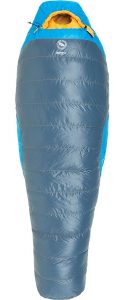
- WEIGHT: 2 lbs 8 oz / 1,130 g
- TEMPERATURE: 15 F / -9° c
- PACK SIZE: 8″ x 17.5″ stuff sack (20 cm x 44 cm) / 8.5″ x 8.5″ compressed size (21.5 cm x 21.5 cm)
- MATERIALS: 600 FP DownTek™ water repellent down, Nylon Ripstop shell with DWR finish, Nylon Taffeta lining
The Big Agnes Spike Lake offers great value for money without sacrificing performance and goes to show you don’t need to spend a grand to sleep like a king or queen. The water-repellent finish works really well to keep moisture out, and the treated DownTek keeps most of its loft if it does come into contact with water – which means it maintains its insulating properties in damp conditions.
The Big Agnes brand is well known for their System Bags which are compatible with sleeping pads, but they also have some cozy double sleeping bag systems if you are traveling as a couple.
VERDICT: The Big Agnes Spike Lake 15 is great value for money and a great entry-level down sleeping bag for 0-degree temps. There is plenty of space to turn around inside the bag, and you feel well protected from the elements wherever you are. Recommended for anyone on a budget who doesn’t want to sacrifice warmth or comfort.
KLYMIT KSB 20 Down Sleeping Bag
- WEIGHT: 2 lbs 12 oz / 1,250 g
- TEMPERATURE: 20˚F / -7˚C
- PACK SIZE: 13″ x 8.5″ / 33 cm x 21.6 cm
- MATERIALS: 650 FP White Duck Down, 20D rip-stop nylon with DWR treatment, 20D nylon lining
The KLYMIT KSB 20 isn’t the lightest down sleeping bag for backpacking, but it is one of the cheapest. The stretchy baffle system is one of the best we’ve seen, and it gives you lots of freedom to move about when zipped uptight.
The KLYMIT KSB 20 Down Sleeping Bag works well when paired with their insulated sleeping pad and is also available in a camoflage color combination.
VERDICT: As you might expect from one of the cheapest sleeping bags on the list, the KLYMIT KSB 20 Down is very basic and lacks the luxurious quality that other brands strive for. If you use your gear hard and fast, then this might be a good choice. Otherwise, I would look for something a little lighter.

What to Look for In a 4-Season Sleeping Bag?
Here are the most important features to seek out when looking for a zero-degree sleeping bag you can use in winter:
Warmth
If you are looking for a sleeping bag to keep you warm while exploring the globe, then no doubt you are serious about looking after yourself. There is a massive difference between lower-end sleeping bags and quality-assured products from well-known brands.
Cheap sleeping bags might have worked okay for summer camping trips and music festivals, but once the temperature drops below 0ºc, you are in for a very cold night, trust me. There are a few things you can look for when buying a sleeping bag for backpacking, and the first is the temperature rating.
Temperature Rating
If you’re backpacking somewhere freezing cold, the primary concern on your sleeping bag criteria should be the temperature rating. As the European Advisory devised a legal standard for sleeping bags in 2005, temperature ratings are displayed on all the sleeping bags on this list.
These ratings are presented in “comfort” levels, where the “comfort temperature” displays the lowest temperature that the sleeping bag can contend with before its occupant gets cold. They also include “extreme” ratings for the coldest temperatures, such as snowy conditions and mountains.
Before searching for sleeping bags, ensure you know the temperature of your intended location and choose a sleeping bag that is suitable. Below is an example of an EN13537 tested sleeping which has a clear diagram of the recommended guidelines.

Season Rating
Sleeping bags also have simpler season ratings. The codes for ratings are:
- 1 Season Sleeping Bags: Summer (for use when the temperature is above 5 degrees).
- 2 Season Sleeping Bags: Spring/Summer (+0 degrees).
- 3 Season Sleeping Bags: Spring/Summer/Autumn (0 to -5 degrees).
- 4 Season Sleeping Bags: Year-round (-12 degrees and lower).
- 5 Season Sleeping Bags: Extremely cold conditions!
If you’re heading off somewhere cold, you’ll need a sleeping bag with 3, 4, or even 5 season ratings. A good rule to bear in mind here is to opt for a sleeping bag that is warmer than you think you’ll need. It’s better to find you’re slightly too warm and take some clothes off or open ventilation zips than to find you’re too cold!
Extreme Rating
If your location is somewhere with sub-zero temperatures, the extreme condition sleeping bags can offer up to -28 degrees rating. The “extreme” rating basically means “human survival temperature”. This doesn’t mean you’ll be warm or comfortable—just that you probably won’t die of hypothermia or get frostbite. Having a warm tent or shelter is a necessity in any kind of extreme conditions.
Personal Choice
While healthy humans have a body temperature of 37 degrees, there is a massive variation in how each individual “feels the cold”. This means it’s vital that you consider your body’s reaction to the cold when buying a sleeping bag. Don’t just rely on the rating on the bag—if you feel cold, opt for a warmer bag.
It is true that women feel the cold more than men and can have a much lower body temperature at night, so women tend to need a warmer sleeping bag. It is far easier to unzip and cool off in a warm sleeping bag than it is to warm up in a sleeping bag that is not insulated enough to keep you warm in the first place.
Weight
Weight is a crucial factor for most backpackers who want to stay as light and mobile as possible, even more so if you don’t plan on using the sleeping bag every night. As you might expect, 0-degree backpacking sleeping bags are heavier than warm-weather sleeping bags. The extra filling and insulation it takes to keep you warm quickly add up, which is why down sleeping bags make such an attractive prospect. The lighter your sleeping bag, the lighter your load, so always check and compare the weights before buying.
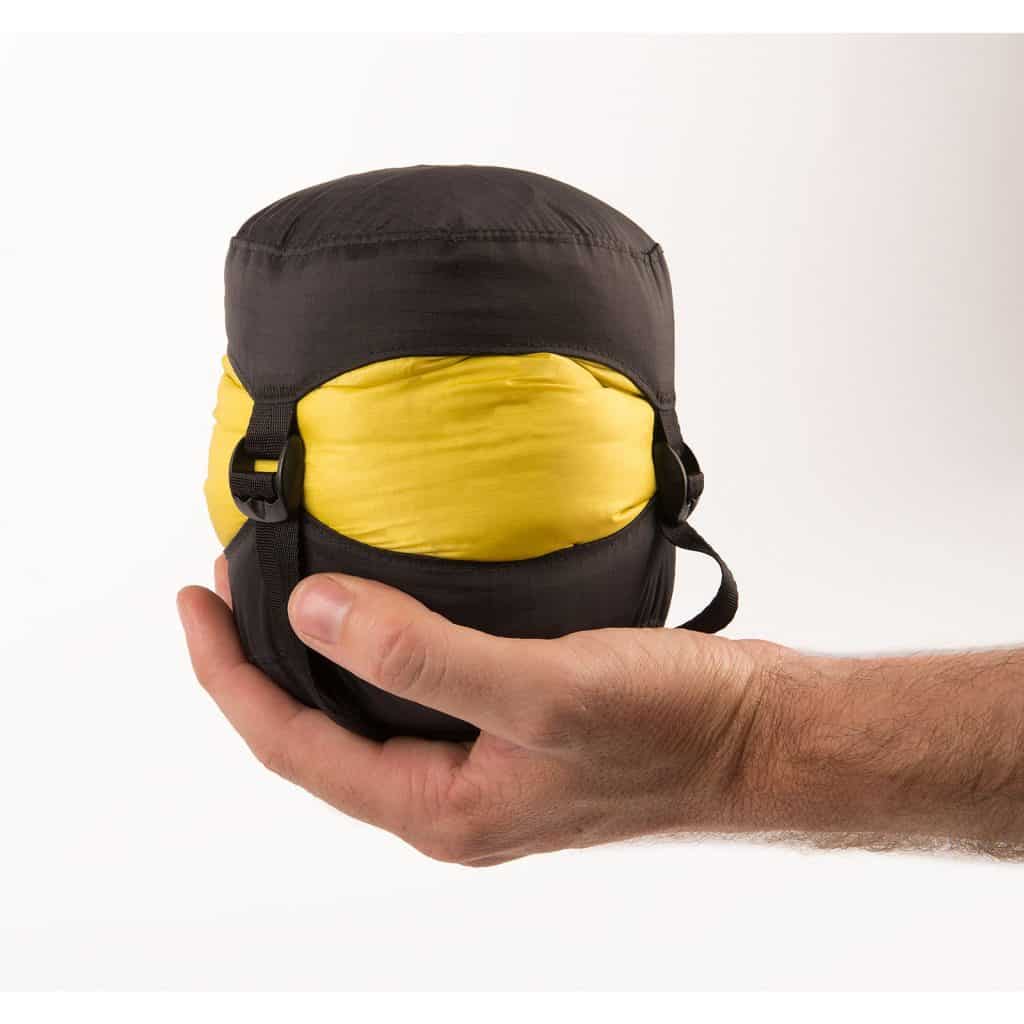
Packed Size
Packed size is another crucial factor for minus-temperature sleeping bags because you only have a limited amount of space in your backpack. Compression sacks are a must for any synthetic sleeping bag as they give you some leverage to squeeze and hold it tightly packed. Down sleeping bags are incredibly compact and can often be stuffed into a small stuff sack or dry bag without much effort.
Because the leap from 3 to 4-season sleeping bags is quite big in terms of size and weight, many people might choose a smaller sleeping bag with a lower heat rating. To compensate for this, you should pack a sleeping bag liner and be prepared to rely on warm base layers and clothes if it gets too cold.
Materials
One of the main factors in ensuring your sleeping bag keeps you warm all night is the insulation it’s made from. The majority of sleeping bags are filled with either synthetic or natural down insulation. There are pros and cons to both, but in the end, it comes down to personal choice and judgment. More on this next.
The fabric used for the liner and outer should also be considered but it is far less important. A tough outer material will give extra protection over the long run, and a soft, breathable lining will provide the most comfort. Some extreme down sleeping bags have a durable water repellant (DWR) coating to prevent the down from getting wet, which is great but adds a ‘couple of grams’.
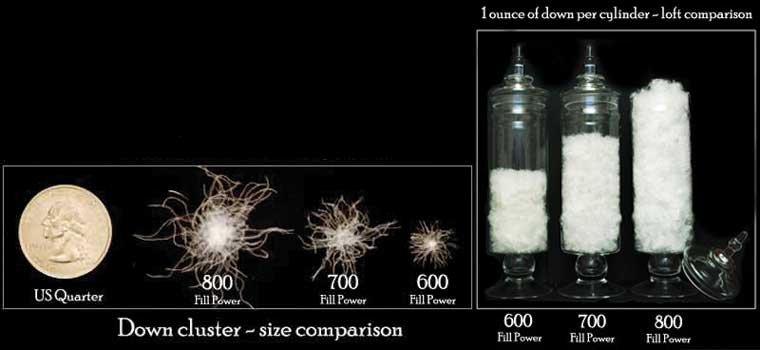
fill power of goose down
Down Vs. Synthetic Sleeping Bags
Deciding between down and synthetic sleeping bags is going to make the biggest difference to the weight, size, and price of your purchase once you have selected a temperature rating. In cold climates, down sleeping bags are most people’s first choice as they provide a much better warmth-to-weight/size ratio than their synthetic counterparts.
The biggest issue with down insulation is that it doesn’t work very well if it gets wet and is a struggle to dry, whereas synthetic insulation is designed to keep you warm even if it does get wet and also dries much faster. Down sleeping bags are generally more expensive and require more care than synthetic sleeping bags but will typically last longer.
Benefits of Down Sleeping Bags for 0-Degree Weather
Down is a layer of fine feathers found under the tougher exterior feathers of birds and contains thousands of tiny air pockets. These air pockets trap air and retain heat, keeping you toasty even in very cold conditions. It offers a wider range of comfort temperatures, so is ideal if you’ll be traveling through multiple countries.
Down sleeping bags are also ideal for backpacking in cold places as they offer a great warmth-to-weight balance. They pack extremely light and small, especially compared to synthetic bags, so they won’t be a burden on your adventures.
-
Related: Top 10 Best Down Jackets
The disadvantages of down are that if untreated, it can absorb moisture, loses its insulating capacity when wet, and takes a long time to dry, so it really isn’t suited to damp conditions.
You can get specially treated hydrophobic down or HydraDown, which dries faster, repels water for longer and retains loft when wet to keep you warm. Coupled with a water-repellant outer shell, you shouldn’t have much of an issue unless you really dunk the thing in water or go to sleep in a puddle. You should always store your down sleeping bags in a dry sack when hiking, or there is a chance it gets wet in transit.
Benefits of Synthetic Sleeping Bags for 0-Degree Temperatures
Synthetic insulation is designed to replicate the properties of down by creating as many tiny air pockets within the fibers as possible to retain maximum warmth. The major benefit that synthetic insulation has over down is that it will keep you warm even if it gets wet and takes less time to dry out.
If you have ever been on an extended backpacking trip with lots of camping, then you know how easily a sleeping bag can get damp. Condensation builds up in the night, and touching the side of your tent is all it takes to get a wet patch near your feet.
A synthetic sleeping bag rated to -10º will keep you just as warm as a down sleeping bag with the same rating will but will be heavier and bulkier to carry. When the price of a synthetic bag can be around half the price of a down sleeping bag, it is understandable why many budget backpackers choose the cheapest option. You won’t find any synthetic bags on this list because they just can’t compete with the warmth-to-weight ratio of down sleeping bags.
Shape
Most of the best 0 Degree Sleeping Bags tend to come in two main shapes: rectangular and tapered/mummy.

Rectangular Sleeping Bags Provide More Space
Rectangular sleeping bags have a zip around two sides and can be zipped to other rectangular sleeping bags using opposing zips to form giant sleeping bags. However, the extra room of the non-fitted shape is far less insulating and rarely includes a hood, so they’re not suitable for extreme conditions but are ok if you are traveling as a couple. A downside is that rectangular bags can be weighty and bulky, which isn’t ideal for lightweight backpacking.
Mummy Sleeping Bags are Best for Winter
Mummy sleeping bags, unsurprisingly, keep you wrapped up like a mummy. The tapered, fitted shape retains heat far better than rectangular bags, and they feature a “hood” to rest your head in, retaining vital warmth. They weigh less than rectangular bags, and most feature a “stuff” sack so they can be substantially compressed. This makes them brilliant for backpacking, as they don’t take up too much room.
The majority of mummy bags are single-sized, but some can be zipped into double bags using opposing right- and left-handed zips.
What Features Are the Best for 0-Degree Sleeping Bags?
There are some features that can improve the usability of a sleeping bag for backpacking in cold weather and others that are useful wherever you are. If you happen to be sleeping in a hammock on a chilly night, you will surely take all the warmth you can get.
- DWR coating is always good to have because sleeping in a wet bag isn’t much fun.
- Drawstring or draft collar hoods stop heat loss around your face and block out some light and sound in noisy places.
- Stuff sacks are a backpacker’s best friend and help make your sleeping bag/backpacking gear as compact as possible.
- Inner pockets are a good idea if you stay in a lot of backpacker hostels so that you can keep your most valuable items secure.
Zips
There are a few factors to consider when you’re looking at zips:
- Left or right-handed zips: Right-handed people need left-sided zips, and left-handed people need right-sided zips
- Two-way zip: Some bags contain two-way zips to enable you to ventilate various parts of your body.
- Full-length or half-length: Some bags feature a full-length zip to enable ventilation.
- Zip baffle: As heat can be lost through zips, this insulates the zip.
- Zip cover: This bit of Velcro stops your zip from unfastening while you’re asleep.
So now you know what to look for when choosing a sleeping bag, you can start to look for the one bag that ticks all your boxes. Here is our list of 12 cold-weather sleeping bags for backpacking and camping to get you started. All these bags have solid reputations, and we would not recommend anything we would not use ourselves.
Thanks for reading our guide to the best 0 degree sleeping bags. Stay tuned and subscribe for our summer sleeping bag list coming soon.

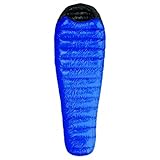



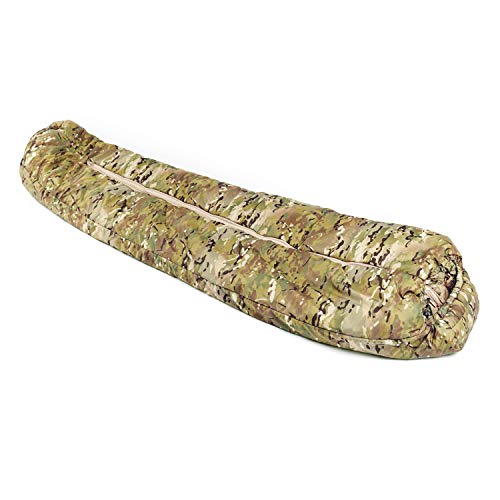
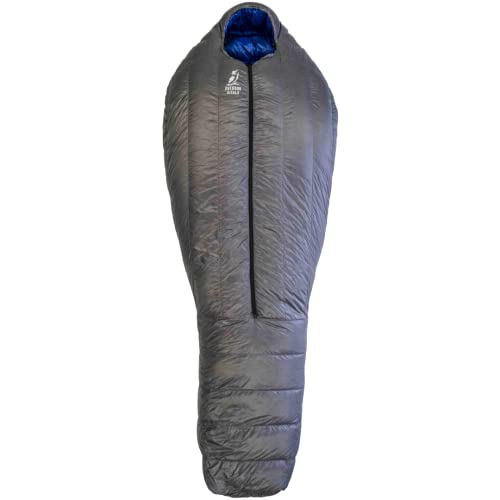



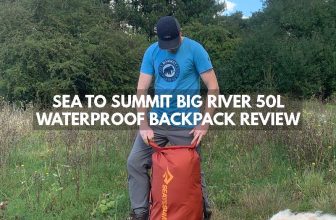
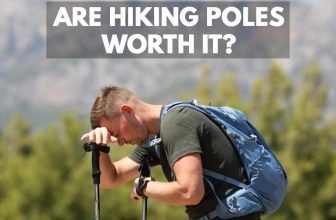

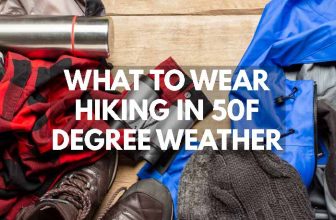
[…] Related: 12 Cold Weather Sleeping Bags for Backpacking […]